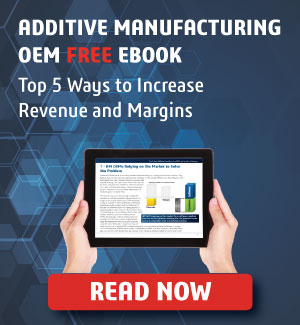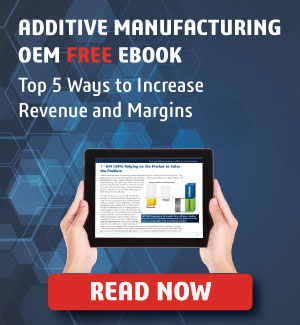With additive manufacturing - such as 3D printing - growing in adoption, especially in high-tech industries such as aerospace, we speak to Ray Bagley, Director of Product Management at Spatial to build an understanding of the fascinating trend.
In this interview Ray examines how subtractive manufacturing - the mainstay of manufacturing processes for decades - differs from additive manufacturing and what the latter offers in terms of new benefits and challenges.
Interviewer: Let’s start off by clarifying the main difference between additive and subtractive manufacturing
Ray BagIey: In subtractive, you start with a hunk of material and remove material from it bit-by-bit until you reach the final shape. Removal can be done by milling, turning, drilling, erosion, grinding, or hammer and chisel.
In additive manufacturing, you start with nothing and add material bit by bit -- only in the places desired -- until you reach the final shape. There are many different additive technologies, but typically a single machine uses only one of them.
Subtractive Manufacturing Examples
Interviewer: Could you provide specific subtractive manufacturing examples?
Ray BagIey: The most common example of subtractive manufacturing is machining. A CNC mill has a rotary tool in it and it cuts away metal. And CNC (which stands for Computer Numerical Control) allows that to be programmed by computer so you can do fancy shapes and do things repeatably over and over. Milling is the most common subtractive operation.
Turning using a lathe, where you spin the part into a stationary cutter, is the second most common form of subtractive manufacturing, while erosion and grinding are used for removing smaller amounts of material. There are a lot of subtractive approaches and methods, but milling and turning are the most common.
ADDITIVE MANUFACTURING benefits
Interviewer: What are the major benefits that additive manufacturing provides that subtractive doesn't?
Ray BagIey: In subtractive manufacturing, air costs money. Meaning, anywhere that material has to be removed from the original stock costs cycle time and thus money.
Complexity is limited to what can be removed; it is quite easy to design shapes that cannot be made with any combination of subtractive methods.
In additive, complexity (and air space) is free but material is expensive. Organic shapes, internal passageways, lattices and many other shapes that are amenable to printing, but can't be machined.
Learn more:
- Features of the Most Effective APIs for 3D Visualization in Manufacturing
- How 3D Visualization Can Help Eliminate Errors in the Manufacturing Process
- Leverage 3D Visualization to Improve Your Manufacturing Processes
Interviewer: In what situations does it make sense to use each?
Ray BagIey: Additive is best when you have a sparse design - like a lattice or skeleton - that has a low ratio of material to total volume or perhaps shapes that are very complex and difficult or impossible to machine.
Subtractive is better when the amount of material to remove from the stock is relatively little. A block with a few holes or features is typically much cheaper to machine than print.
Additive Manufacturing Problems
Interviewer: What roadblocks does additive manufacturing have to overcome to become more widely used?
Ray BagIey: Predictability and control.
Predictability
Today it's challenging for someone to buy a 3D printer and start printing parts reliably. You must learn how to correctly prepare parts for printing, apply supports, print successfully without major defects, minimize post-processing and control the physical properties of the result.
Most people go through an awful lot of experimentation or failed prints before they can reliably print new designs. More and more of this expertise should be built into software, which would shorten the time before reaching productive use for a new machine or process and increasing the productivity of established machines.
Material Control
Process and material control is another. If you buy a block of Ti-6Al-4V titanium and machine it into a part, you’ll know - with a high-level of confidence - what to expect from that material’s mechanical properties.
But if you buy the same material in powder and print a part, the final material properties - considering the multiple melting cycles during printing, porosities, and more - are drastically more uncertain.
Characterizing and standardizing all of these process effects on material properties is key to bringing additive manufacturing into the manufacturing mainstream.









.jpg?width=450&name=Application%20Lifecycle%20Management%20(1).jpg)






